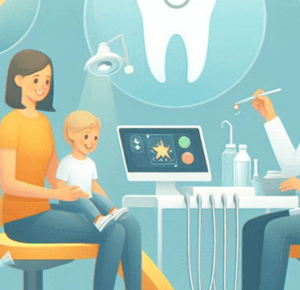
Biomimetic dentistry is considered one of the alternative options for root canals to treat tooth decay problems. It is away from the traditional invasive procedures and helps you to get rid of dental issues. It comes under restorative dentistry, which helps in maintaining and saving the natural tooth structure through its treatment methods.
If you are someone who is looking for the meaning and procedures of biomimetic dentistry, then you are at the right place. In this article, we will discuss some of the critical points related to biomimetic dentistry and how it can help you in dealing with dental issues. If you are in Hailey, then you can also consult a family dentist in Hailey, ID to know more about the treatment procedures.
What is Biomimetic Dentistry?
Biomimetic dentistry is often known as biomimicry, which is a dental restorative process that involves dental fillings, dental crowns, and root canals. The word biomimetic means repairing damaged teeth and providing or mimicking the natural tooth’s look, functions, and biomechanics. It aggressively works to avoid causing any tooth damage by using specific techniques. However, it is considered a less invasive method than the traditional dentistry methods.
What is the Difference Between Biomimetic and Traditional Dentistry?
There is a vast difference between traditional and biomimetic dentistry. In conventional dentistry, there is less requirement for drilling. However, biomimetic dentistry uses different techniques other than drilling, and therefore, this is the main difference between biomimetic and traditional dentistry.
The main aim of biomimetic dentistry is to rebuild the teeth and stimulate the natural dentition of the teeth as closely as possible. In order to protect the natural properties of the teeth, cavities, and other issues, lesions are carefully repaired by using cutting-edge materials and adhesives.
In traditional dentistry, there is the use of more invasive methods in comparison to biomimetic ones. There is frequent involvement in the removal of tooth tissues. There are other therapeutic procedures used to repair the tooth, which are more difficult than the natural tooth and can lead to shrinkage and cracks or damage to the teeth. Thus, biomimetic dentistry is preferable to traditional dentistry.
What are Materials Used in Biomimetic Dentistry?
There are some popular materials used in biomimetic dentistry, and we must be aware of these materials.
- There is a use of calcium phosphate hydroxyapatite which is generally used to create inlays, outlays, and dental crowns. It is a perfect choice to replace the defective enamel.
- Aluminum oxide is used for durability and biocompatibility. It is mainly effective for combining with the body tissues.
- There is use of glass ionomer cement which is used to harden the tooth dentin. It helps in adhering to the natural teeth, which means that this filling will last for a lifetime. Therefore, it is very effective because you don’t have to worry about its falling.
What are the Benefits of Biomimetic Dentistry?
Biomimetic dentistry helps you to get the tooth in the most natural state. There is use of a variety of biomimetic procedures that help in performing tooth-conserving dentistry such as removal of the least amount of tooth tissues while removing infections and cavities. Some of the expected benefits of biomimetic dentistry involve the following points such as:
- It helps in preserving the natural teeth.
- It avoids using chemicals in your mouth.
- It is less invasive, and therefore, it reduces the need for anesthesia.
- It is also a cost-effective treatment as it is less invasive.
- It looks aesthetically pleasing and feels like a natural tooth.
- There is extended longevity of the treatment procedures.
- It is more comfortable as it preserves the tooth structure.
- There is a strong bond in biomimetic dentistry as it helps in restoring the bond of strong teeth. It helps in creating a strong and long-lasting connection.






